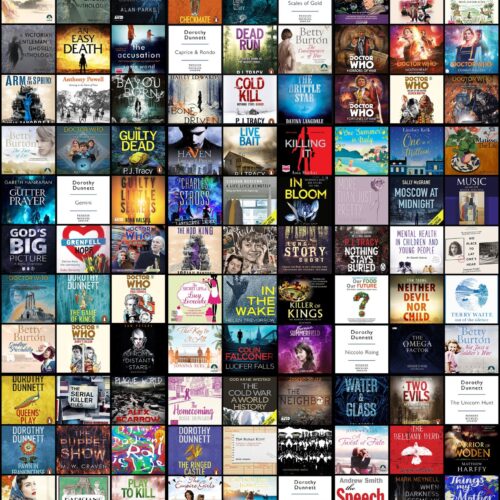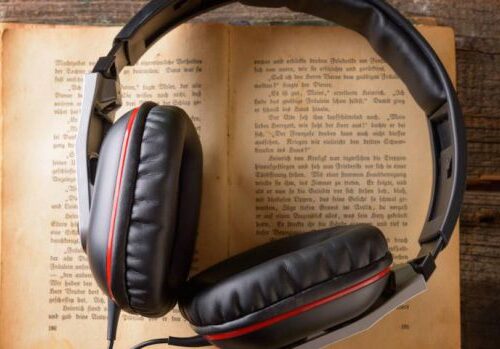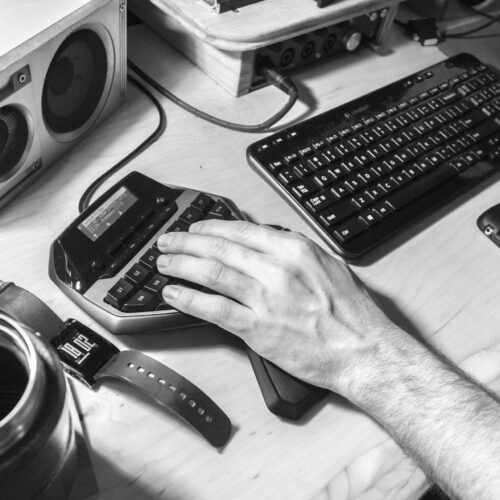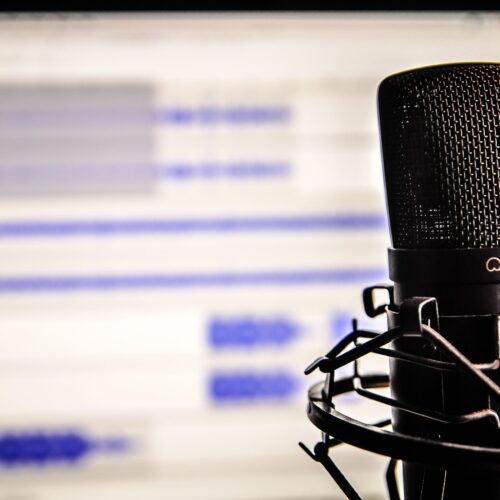Another sexy #audiobook production topic for us to get our teeth into today. Come join me in my Red Room of Ear-pain, as I take a quick ‘n’ saucy look at the topic of silence. Our safe-word today will be NEUMANN.
Silence, apparently it can be golden, and it can also be precious. For us in the audiobook world it is a thing to be hyper-vigilant of, oft-times wary of, and occasionally oblivious to. In the world of audio silence can be devastatingly powerful, or job-endingly embarrassing. Dead-air on radio is a no-no, so much so that leave 7+ seconds of it and all sorts of back-up systems kick in to fill that valuable airtime (one of my earliest jobs in commercial radio was creating back-up tapes for this very eventuality). In audiobooks, prolonged silences usually sound like someone has made a mistake in the editing process. Of course, in audio drama, or particularly-dramatic readings, a long silence can be a powerful statement. But in general, anything more than 3 seconds of silence is pretty much a no-no.
But silence is much more than just the absence of sound. And the term ‘silence’ itself usually means something different to its dictionary definition. In audiobook production, when we say silence, we normally mean studio tone…that delicious background sound of a booth/studio/room unhindered by a narrator’s bodily functions and movements. That oh-so-precious commodity, the ‘quiet room’. Sound engineers and editors dream of it. They all have their own story of the halycon day when they were sent a pristine piece of studio tone. Ah yes, silence to wash away the everyday noises of a working booth!
OK, enough waxing lyrical. Silence, or studio tone, is all-important. It is the ‘resting’ sound of your recording set-up, and it is a valuable tool for editors when tidying up recordings. But let us get one thing straight here…IT IS NOT TRUE SILENCE! No, we are not talking about automatically generated digital silence…pure 0dB or -infinifty sound. All DAWs can generated this for you, and it has its uses. We are talking about actual, recorded, studio sound. EVERY studio, booth, room, professional or home setup should have a 60 second room tone recording. Professional studios will usually record a fresh one for each session/title. THIS is what we use when editing the audiobook. THIS is what we use to tidy up movement and body noises. THIS is what we use to create top and tail silences.
Let me show you the opening of a recent audiobook I produced and edited for a major publisher:
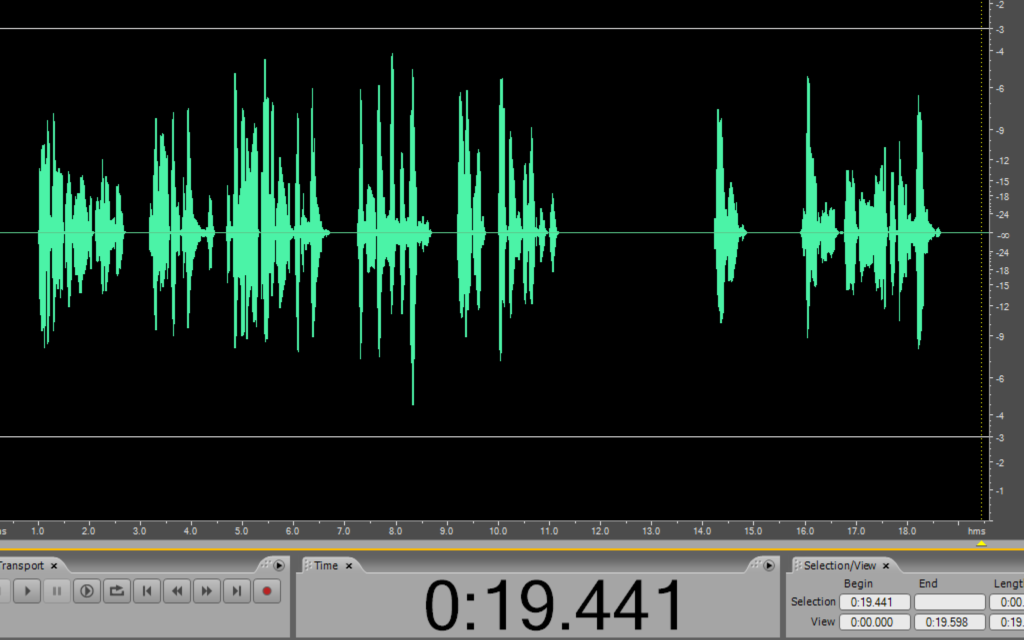
So, here we see a 1 sec silence at the top of the file (as per the client’s spec) followed by the intro credits, and then a 3 sec silence (as per spec) followed by Chapter title and caption. All of these gaps/silences are ultra clean and taken from a 60 sec studio tone file created by the studio on the first day of recording.
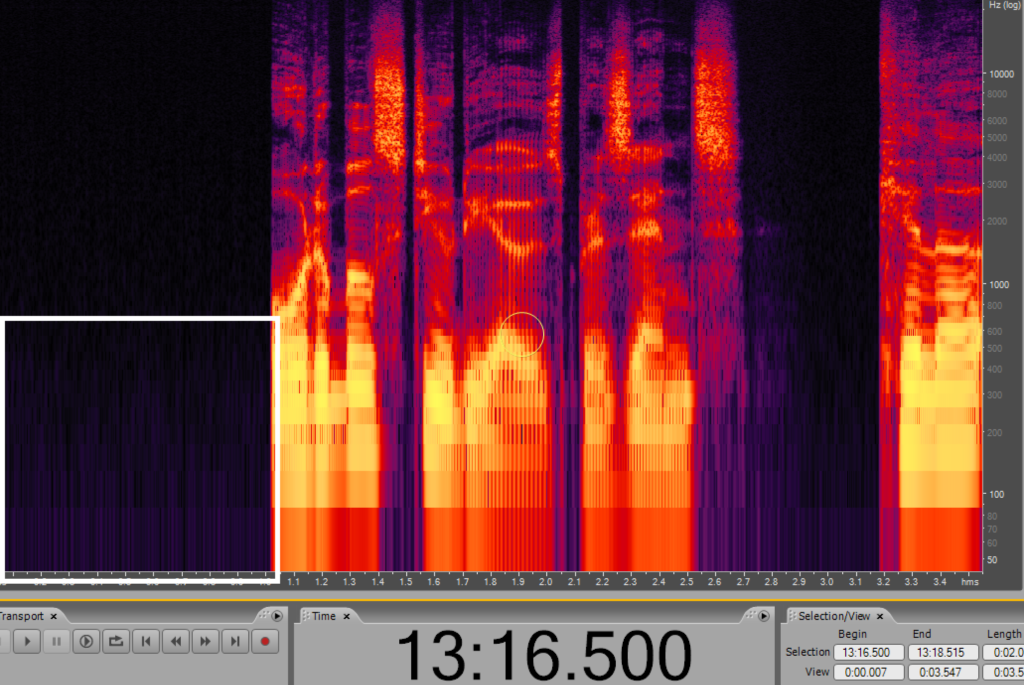
Here’s the start of that same file seen in spectral editing mode. You can see that the ‘silence’ actually has some fine audio to it. It is peaking at -75dB and is mostly comprised of lower-end frequencies…no air-con or fan noise in the upper register. Also, no clicks, bangs, or other noises.
The reason behind using clean, quiet studio tone is so that there isn’t a ‘cliff edge’ transition between the narration and the silence. An over-reliance on generated digital silence, or the heavy-handed use of processing such as gates and noise reduction, can lead to very awkward sounding audiobooks, where you can clearly hear the ‘tone’ of the room behind the narrator, and it then suddenly disappear in the gaps, and then reappears when the narrator talks. Like this:
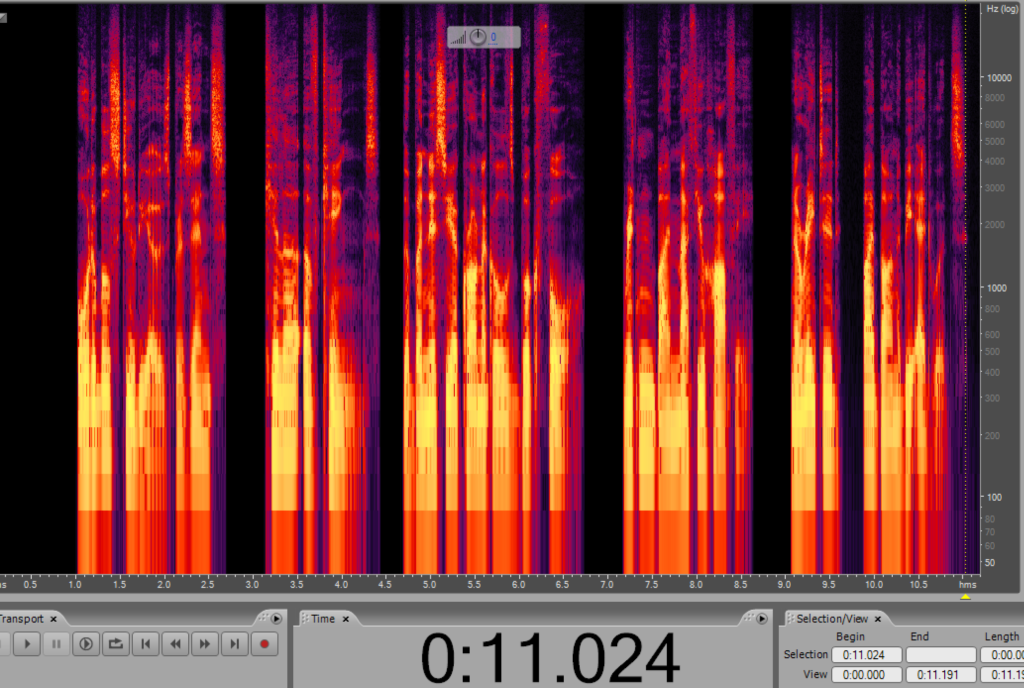
It might look beautifully clean, but the listening experience is almost as bad as listening to an audiobook where none of the background noises and distractions have been cleaned up. In this particular studio, the room tone is pretty amazingly quiet, but even so, using digital/gated silence for gaps makes a pronounced and negative difference.
So studio tone is the way to go. Of course, this doesn’t mean you can’t clean up the studio tone you are sent…remove imperfections and noises, EQ it slightly, or even use a soft noise-reduction…whatever it takes to create something that sounds great. To the average ear it should sound like silence, like nothing…but to our ears we should still be aware of its presence. Like high-end harmonics…without them we notice something is awry!
With all that said, using silences the correct way is also imperative. Always check with your client what their tech spec is, but the usual (UK) guideline is:
- 1 sec silence at TOP of file
- 3 sec silence between intro credits and chapter heading
- 2 sec silence between chapter heading and main text
- 1 sec silence between sentences/paragraphs
- 3 sec silence between paragraph breaks
- 3 sec silence at end of final file BEFORE the closing credits
- 2 sec silence at TAIL of file

This isn’t set in stone, for example Audible UK uses these specs, but Audible US ask for .5 sec silence at the TOP of a file. Other publishers want longer or shorter gaps. And gaps between sentences and paragraphs are always open to artistic interpretation by both the narrator and the editor…nothing hard and fast there, just whatever fits the story, character and pacing. But IT IS IMPORTANT to be consistent. Something that has occurred a lot with various editors I’ve hired over the years is inconsistency with standardised gapping. I’ve given them the spec, yet the files still come back to me with .5 sec, or 1.2 sec or 2 sec gaps at the start; with 5 sec gaps at paragraph breaks; and with anything up to 10 sec gaps at the tail of files. It’s why I personally master and check EVERY audiobook that comes through Ladbroke Audio, so such inconsistencies are ironed out, and clients get what they have paid for.
My process is to ‘Check-The-Spec’ before every edit job, write a note if I need to, and then after everything is done, all files have been mastered, checked and fixed…I then do a fast sweep through to double-check all the gapping is correct. It takes very little time, and also allows me a fast visual check of the files in case any part of the process has caused problems. Getting this small but important part of the production process right, is the difference between a professional end product and an amateur one. Many check listeners/QCers will also listen out for gapping issues if you ask them to.
The TOP/TAIL stuff is editor 101, whilst the sentence/paragraph stuff is more open to artistic licence. But it is all 100% important, and something worth taking your time over.
The words do all the talking, but in audiobooks the silences can shout the loudest!
